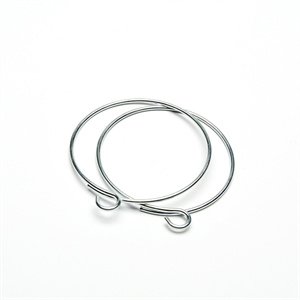Circle Spring Clips Wire Forms Manufacturer
Circular spring clamp wire forming is a specific spring manufacturing process mainly used to produce wire springs with circular cross-sections and process them into the desired clamping shape. This molding technology is widely used in various fields, including toys, furniture, mechanical equipment, etc., to provide stable elasticity and clamping force.
The process of forming circular spring clip steel wire usually includes the following steps:
Material preparation: Select suitable steel wire materials and determine the diameter, material, and length of the steel wire according to the application requirements. Steel wire materials should have sufficient elasticity and durability to withstand long-term use and repeated deformation.
Cutting and preparation: Use a wire cutting machine or manual tools to cut the steel wire into appropriate lengths. Then, clean and rust remove the steel wire to ensure its surface smoothness and flatness, facilitating subsequent forming operations.
Forming: Put the prepared steel wire into a specialized forming machine, and bend and shape the steel wire according to the preset shape through mechanical force or thermal action. The forming process of circular spring clamp steel wire requires precise control of machine parameters, such as bending angle, bending radius, and forming speed, to ensure the accuracy and consistency of forming.
Quenching and tempering (if required): In order to improve the hardness and durability of steel wire springs, quenching and tempering treatment may be necessary. Quenching is the rapid cooling of steel wires after heating them to a certain temperature to increase their hardness and brittleness; Tempering refers to heating the steel wire to a lower temperature and holding it for a period of time after quenching, in order to reduce its brittleness and improve its toughness.
Assembly and testing: Assemble the formed steel wire spring and clamping components, and make necessary adjustments and tests. This includes checking the performance indicators of the spring, such as clamping force, elasticity, and durability, to ensure that it meets the design requirements and usage requirements.
